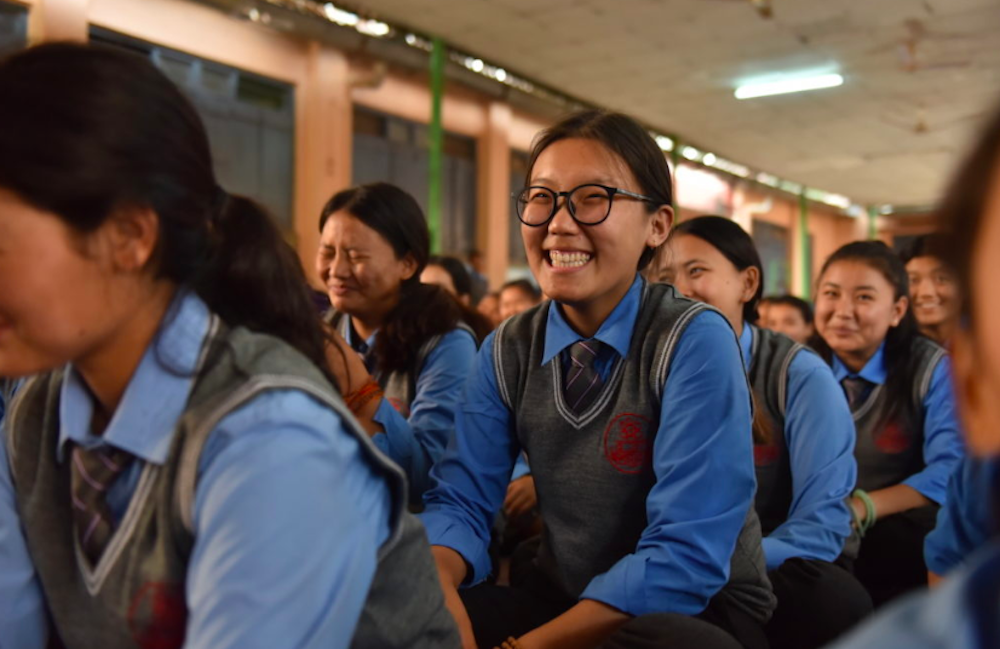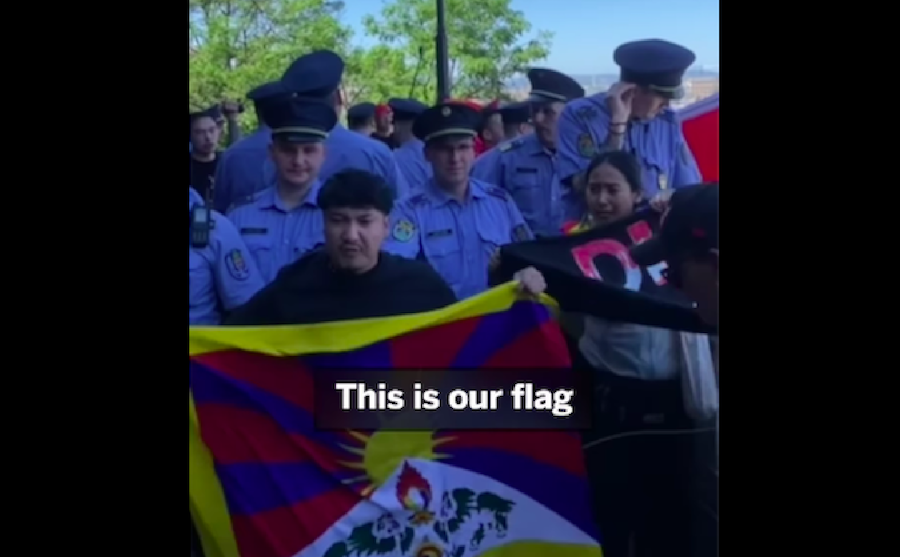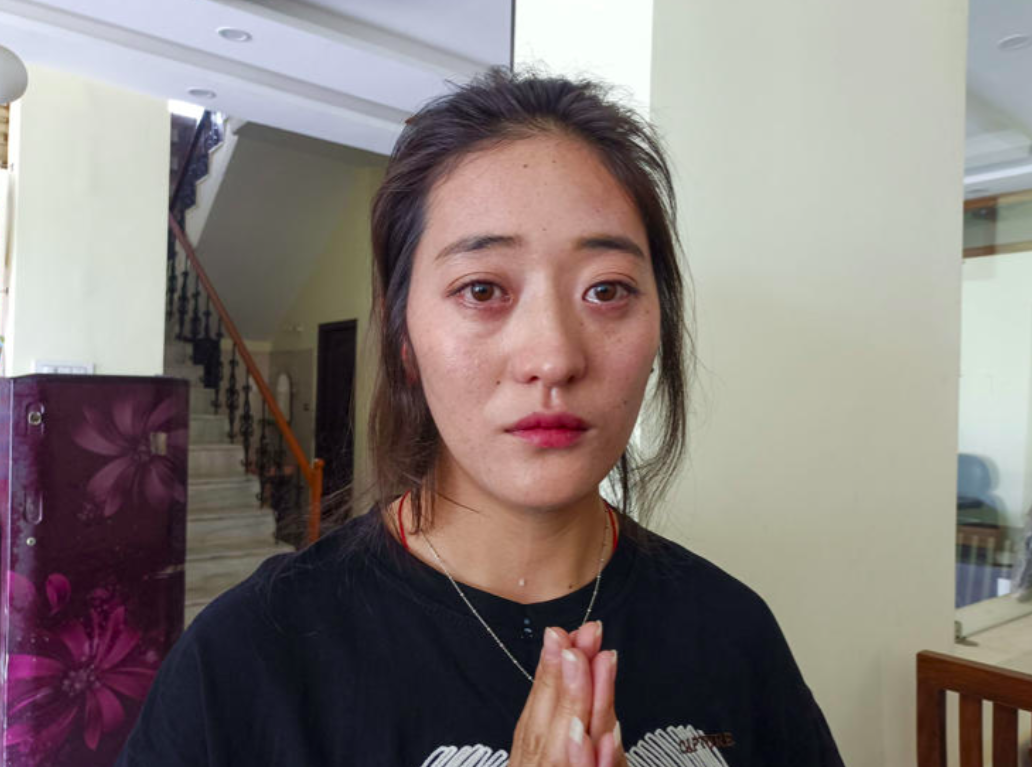E/CN.4/Sub.2/2003/NGO/11 14 July 2003
COMMISSION ON HUMAN RIGHTS Sub-Commission on the Promotion and Protection of Human Rights Fifty-fifth session 25 July – 15 August, 2003
Item 2 of the provisional agenda
QUESTION OF THE VIOLATION OF HUMAN RIGHTS AND FUNDAMENTAL FREEDOMS, INCLUDING POLICIES OF RACIAL DISCRIMINATION AND SEGREGATION, IN ALL COUNTRIES, WITH PARTICULAR REFERENCE TO COLONIAL AND OTHER DEPENDENT COUNTRIES AND TERRITORIES: REPORT OF THE SUB-COMMISSION UNDER COMMISSION ON HUMAN RIGHTS RESOLUTION 8 (XXIII)
Written statement* submitted by the Society for Threatened Peoples, a non-governmental organization in special consultative status
The Secretary-General has received the following written statement which is circulated in accordance with Economic and Social Council resolution 1996/31.
[3 July 2003]
The United Nations Convention on the Rights of the Child (CRC) secures to children the basic rights to food, shelter, healthcare, and an education. It also states that, to implement the Convention, States should be guided at all times by the “best interests of the child.” The CRC and the Refugee Conventions provide broad protection to children who remain in their home countries, and to those who are forced to flee their borders. Unfortunately, however, a number of children today do not enjoy many of the rights provided by these two international agreements.
Each year, nearly 1,000 Tibetan children are seeking refuge in Nepal. Many choose to join the other 20,000 Tibetan refugees living in Nepal, while others continue onward into India. Most of these children do not leave their homes in the Tibet Autonomous Region in the People’s Republic of China (PCRC) on their own accord. Rather, their parents choose to send them into exile to seek greater religious freedom and an education that is unavailable to them in the Tibet Autonomous Region. Tibetan parents often cite their fear that their children will grow up learning and believing the political indoctrination that is taught to them in the Chinese run schools in the Tibet Autonomous Region. Sending their children in exile thus is perceived as necessary to the preservation of their cultural and religious heritage, and to allow their children to grow and develop in the way that they choose. For others, any education in the Tibet Autonomous Region is unattainable, either because it is
prohibitively expensive or as a result of the discrimination against Tibetans in Chinese run schools. Therefore, almost all of these children leave their homeland because the Chinese authorities had not protected a number of rights afforded to them under the CRC.
The Tibetan children’s journey is a long one and is often by foot. Hired guides lead groups of children and other Tibetan refugees through the Himalayas to Nepal. These trips frequently take over one month to complete and are wrought with dangers, to which children are especially vulnerable. Children who made the journey recounted seeing “the dead bodies of small children along the way”. In fact, the harsh climate, lack of food and physically challenging terrain cause most children completing the trip require some sort of medical treatment for frostbite, malnutrition and gastrointestinal problems upon arrival in Nepal.
The refugee children’s escape to Nepal and India is made more difficult by widespread abuses by Chinese officials and Nepalese borders police. Children have reported that Chinese soldiers imprisoned and tortured them for weeks at a time. Further, bribery, beatings and occasional rapes are suffered at the hands of the Nepalese border police. Most recently, Nepalese police arrested two fifteen-year-old Tibetans for being in Nepal illegally and failing to pay visa fees while they travelled to India. On 15 January 2003, a Nepalese court sentenced each of the children to three-year prison term.
It is clear that Tibetan refugee children have suffered the derogation of many of the rights guaranteed to them by CRC, including the rights to “the highest attainable standard of health,” the freedom of conscience and freedom from discrimination. The Chinese authorities undertook as its obligation under the CRC to protect these children’s rights “in their best interests,” but many of them suffer the lasting consequences of the Chinese authorities failure to do so. An overwhelming number of the children have negative psychological effects of exile. The fear and trauma of their experiences cause many children anxiety, recurring fears, insomnia and nightmares. One young girl said: “When I sit alone, I remember when the policeman slapped me”.
Once in Nepal, Tibetan refugees often do not attain the rights they were denied in the PCRC despite the fact that UN High Commissioner for Refugees maintains an office in the Nepalese capital. While the CRC ensures that every child receives humanitarian assistance and the right to acquire citizenship, the Nepalese authorities had not provided it in many cases. Refugees arriving in Nepal generally do not acquire citizenship and often receive no refugee identity cards at all. This is the case for children born to Tibetan refugees in Nepal, as well. Children born after 1999 in Kathmandu settlements and 1995 in Pokhara settlements are not listed on their parent’s refugee identity cards. Therefore, not only do they not have citizenship, but they possess no official evidence of their legal right to remain in Nepal. This lack of identification prevents them from attending school in many circumstances, especially at the secondary level. Some refugee children suffer a different fate.
For example, a Tibetan woman who had been imprisoned in Nepal since 2001 for travelling illegally gave birth while in detention. She and her newborn son were finally released on 23 August 2002 after a German physician paid their fine. Currently, there are 10 Tibetan refugees in Nepalese jails who are serving a sentence of 10 years each for lack of residential permits and visa.
At 5:45 am on Saturday, 31 May 2003, Nepalese authorities loaded 18 Tibetan refugees from Hannaman Dhoka prison in Kathmandu into a Chinese Embassy vehicle, according to eyewitness accounts and confirmed later by the Nepalese authorities and UNHCR. The refugees were reportedly in distress while they were loaded into the vehicle calling out to observers for help. The refugees were taken out of the embassy vehicle and loaded into unmarked vans and driven to the Kathmandu Police Club. Approximately two hours later, the vans departed for the Nepal-Tibet border along with the Chinese embassy van. Several western governments and the UNHCR contacted the Nepalese Department of Immigration and Home Ministry to express their strong objections to the complete departure from the protection process for Tibetan refugees and Nepal’s obligations under customary i nternational law regarding forced repatriation of Tibetan refugees. The European Union expressed its serious concern about this r
efoulement. and criticized that access to the asylum seekers by UNHCR was denied, which clearly violates “humanitarian principles and contravenes international law.”
On 31 May 2003, the UNHCR issued a press statement saying that the agency “expressed grave concern about the fate of 18 Tibetans asylum seekers deported to the PCRC by Nepal. The Nepalese authorities decided to go ahead with the deportation, ignoring lastminute appeals by the UNHCR and human rights groups. UNHCR learned that the deported group included eight unaccompanied minors, some as young as 13.” The press statement went on to say that “UNHCR officials described the move as blatant violation of Nepal’s obligations under international law”. So far the whereabouts and wellbeing of the 18 Tibetans remains to be ascertained as the Chinese authorities have refused to provide any information. We call upon the Sub-Commission to remain vigilant about the above developments as far as the human rights situation in Tibet is concerned.
*This written statement is issued, unedited, in the language(s) received from the submitting non-governmental organization(s).









